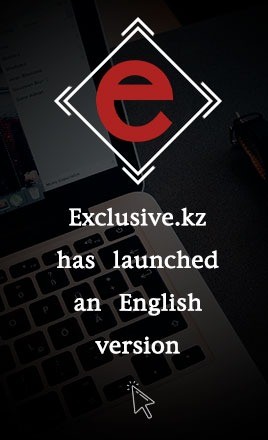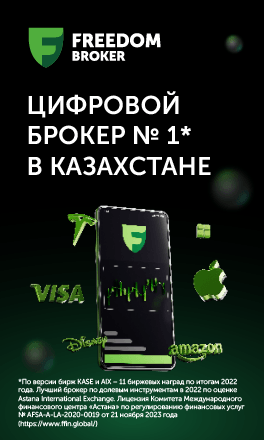Bank owners
Yelena Dudka
And, what belongs to the banks themselves
On the threshold of discovery
Ever since of the time when the first financial institutions not under the control of the government appeared, the question of who owns the nation’s banks has always been an interesting one. And later, more came into being, after numerous outsiders entered the market, finally leaving only a “beautifully swimming group in striped bathing suits”.
The first and only progress today as regards official disclosure of information on the owners of banks (unofficially everyone has always known) has been made with the assistance of the Kazakhstan Stock Exchange (KASE).
Several years ago this information could only be accessed directly from the listings department of KASE, where numerous hardcopy filings from the banks are stored in bookcases.
Nonetheless, are these the actual names? The lists of shareholders for the majority of banks include the names of unknown companies. Judging by the documents, behind the numerous LLPs, JSCs and unassuming citizens, are the sharks of capitalism, whose names and photos have never been published in newspapers.
The lists of shareholders are themselves indicative of the system in place, for example with regards to Bank TuranAlem (BTA) and Bank CenterCredit (BCC).
Using BTA’s annual report to ascertain the true holder of the controlling stake in the bank is impossible. While the “others” each have less than 5%, the only nominal shareholder is the Bank of New York, which itself has the same [sort of] anonymous persons standing behind it. In 2004, curiously enough, 16.21% of the bank officially belonged to its top management, though without giving names. As of the 2005 annual report, this was no longer included.
I cannot help digressing a bit, turning the readers’ attention to the list of stockholders in Caspian Bank, as of January 1, 2006. I do not know how the indicated group of comrades corresponded at that moment to the real structure of ownership. By itself, this list looks extraordinarily colorful, and possesses unique aesthetics. Next year, the annual report will be different, as the bank has been sold.
Only one among the largest banks can truly be considered 100% transparent in terms of ownership – Eurasian Bank, which is entirely held by Eurasian Financial-Industrial Company.
After Eurasian, the most comprehensible ownership structures are those of Narodny Bank (HSBK, also referred to as Halyk Bank – the Kazakh language version) and KazKommertsBank (KKB). The largest owner in HSBK, the oldest financial institution of the country, is officially Almeks, a holding group, which controls 82%. For those who do not understand [how this could be], the auditor of HSBK explains in a published report, “Notes to the Consolidated Annual Report”, as of “December 31, 2005, the bank has actually been under the control of Mr. Timur Kulibaev.”
As regards KKB, more than a third (34.26%) of outstanding shares officially belong to Nurzhan Subkhanberdin, the chairman of the board of directors. Another 15% is held by EBRD. Thus, here is open information about who owns almost 50% of the shares in the leader of the banking sector. The remaining half is in the hands of nominal shareholder the Bank of New York (30.5%) and others (20.24%).
Considering the banking sector as a whole, we can say that disclosure of information on ownership structure by banks is a “documentary farce”, rather than objective reality.
Making the banks name their real proprietors through administrative standards seems hardly possible. The Financial Supervisory Agency (FSA) appealed to the consciences of the major players at the end of 2005, proposing to them the “Memorandum on cooperation and mutual interaction on questions of increasing transparency in operations”. This document is by no means a restrictive measure on the activities of the banks. It is simply an act of goodwill.
As of today, 16 banks have signed this memorandum (KKB, BTA, HSBK, ATF, Alliance, BCC, Caspian, Nurbank, Temirbank, Tsesnabank, Eximbank, Kazinvestbank, Neftebank, Dana Bank, Senimbank, and Zaman Bank). By this action, they fairly promised to inform the FSA who is standing behind them, thus giving these individuals (or companies) the status of legal shareholders.
According to the law, it is worth noting, preliminary consent by the FSA is required to own, either directly or indirectly, 10% or more of any bank. Therefore, in order to bring its shareholders into the bounds of the law, a bank should not only name them, but also apply for the blessing of the supervising body for permitting these owners to actually hold equity in the institution. Theoretically, a bank may disclose its real proprietor, and the FSA could respond by saying, “No… no… no… we will not permit this person to be an owner.”
At the same time, the FSA has called bankers to announce their actual stockholders via the mass media and on their own internet site. With all piety to the regulator, that the banks are ready for this move can hardly be believed. Likely only those organizations seeking [foreign] IPOs, with the requisite high requirements for disclosure, will remove their masks. However, the remaining ones, despite being signatories to the memorandum and having the best of intentions, will remain incognito for the time being.
Changing of the guard
According to the FSA, as of the beginning of the current year, not many changes have occurred within the ownership structures of the banks. There has been more discussion. Some of the acting shareholders in Eximbank, Caspian and Alliance have increased their stakes. Sberbank of Russia has acquired a majority holding in Texakabank.
Caspian is holding negotiations on the sale of a portion of its shares to Baring Vostok Capital Partners (BVCP). This is a foreign consortium, comprised of EBRD, MFK, the Netherlands Company for Financial Development (FMO), the Government Investment Company of Singapore (GIC), as well as other international financial institutions.
To judge by current trends, as have been reported by newspapers and information agencies, soon enough we should expect a foreign investment boom in the banking sector:
“Standard Charted, a UK-based bank, is looking for an opportunity to enter the Kazakhstani market, but is not currently planning any acquisitions or the establishment of a [local] subsidiary. Danial Akhmetov, Prime Minister of Kazakhstan, who met with Richard Mennings, executive director of Standard, approves of the bank’s desire to

 Поддержать
Поддержать
 Smart
Smart  Бизнес
Бизнес  Культурная среда
Культурная среда  Общество
Общество  Политика
Политика  "Законы XII таблиц"
"Законы XII таблиц"  Досье и мифы
Досье и мифы  Асар в Украине
Асар в Украине 


Комментариев пока нет